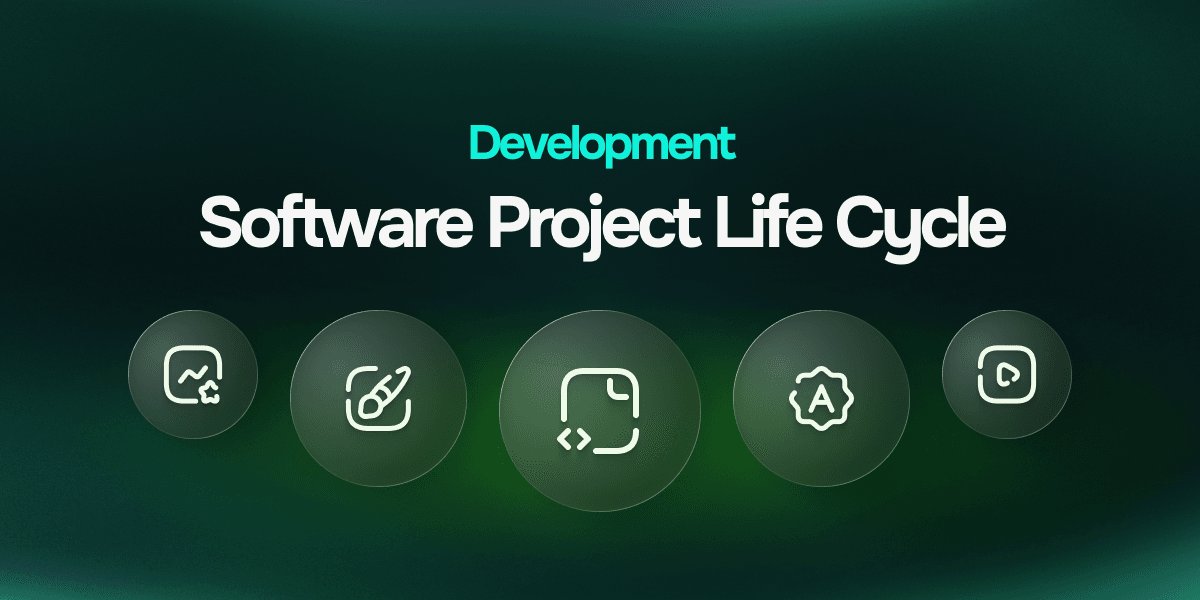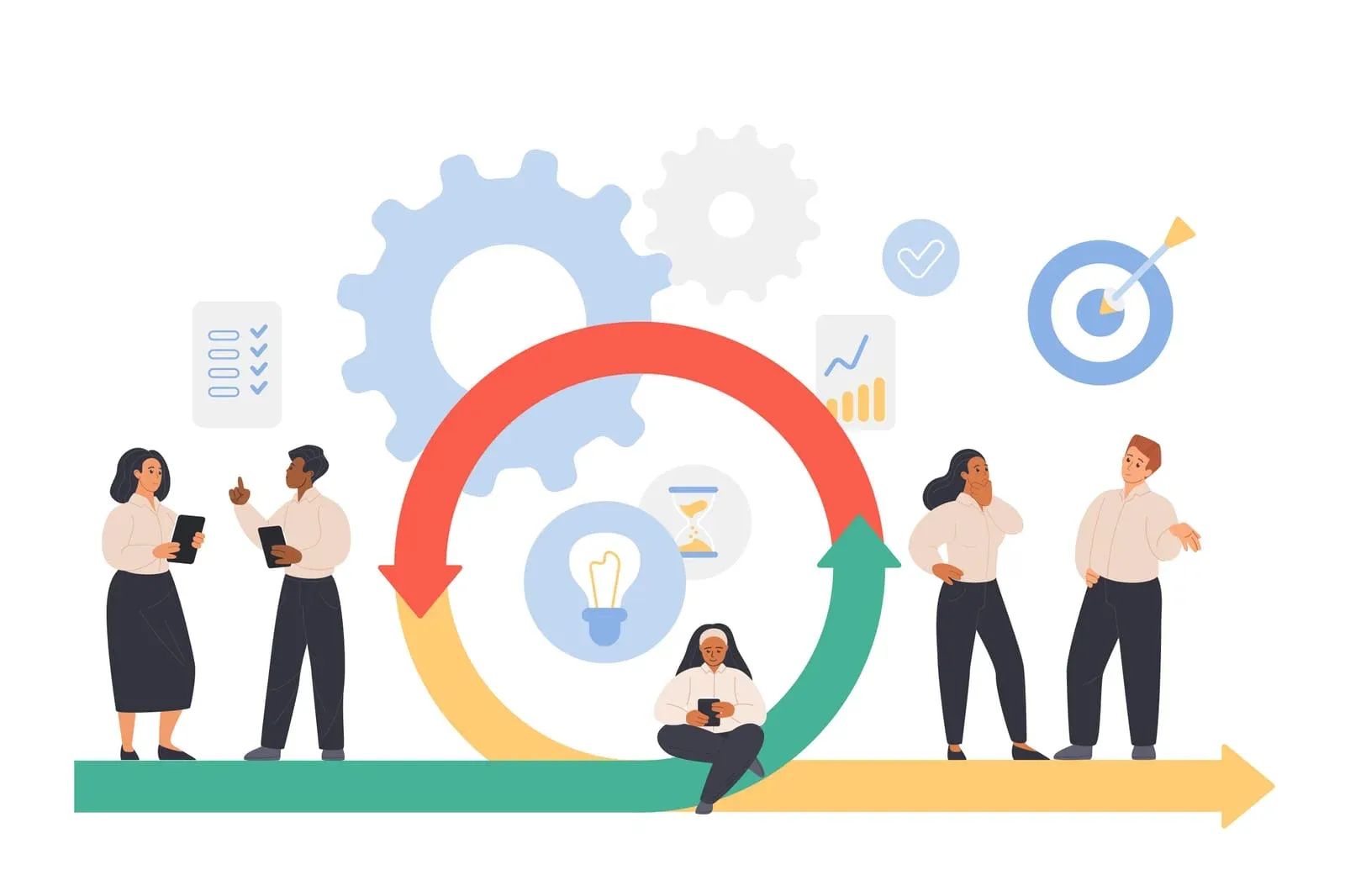
You know that sinking feeling when a software project goes completely off the rails? Three months in, the budget is blown, nobody knows what they're actually building anymore, and the deadline feels like a cruel joke. Sound familiar?
Most failed software projects don't crash because of bad code or technical problems. They fail because teams skip the fundamentals and jump straight into coding without a clear roadmap. Think of trying to build a house without blueprints - you might end up with something that looks like shelter, but good luck living in it.
The software project life cycle exists for a reason. When teams follow a structured approach, they deliver better products on time and within budget. Teams that wing it end up with those horror stories everyone loves to share at developer meetups.
Understanding each stage of the software project life cycle goes beyond following best practices. The structured approach sets your project up for actual success instead of hoping things will magically work out.
What Makes the Software Project Life Cycle So Important
The software project life cycle acts as your project's GPS system. It tells you where you are, where you need to go next, and what route will get you there most efficiently. Without it, you're driving around in circles hoping to accidentally find your destination.
Think of it as a structured framework that breaks down complex software development into manageable stages. Each phase has specific goals, deliverables, and quality checkpoints that keep everyone aligned and moving in the same direction.
Why Following a Structured Approach Actually Works
According to the Standish Group's CHAOS Report, only 29% of software projects succeed fully, while 52% are challenged (over budget, over time, or missing features). When development teams skip phases or rush through them, problems compound quickly:
Requirements get misunderstood, leading to costly rework
Architecture decisions get made without proper planning
Testing becomes a frantic last-minute scramble to find bugs
Integration problems surface when components are combined
Deployment becomes a high-stress event instead of a routine process
A structured life cycle prevents these disasters by ensuring each stage builds properly on the previous one. You can't have solid architecture without clear requirements. You can't write good code without solid architecture. You can't deploy confidently without thorough testing.
The structured approach also makes project management much easier. Instead of wondering "Are we on track?" you have concrete milestones and deliverables that show exactly where things stand. Stakeholders get regular updates they can actually understand, and development teams can focus on building instead of constantly explaining what they're doing.

Key Stages of the Software Project Life Cycle
The software project life cycle stages work together like a well-orchestrated production line. Each stage transforms the project from abstract ideas into working software that people can actually use.
Let's walk through each phase and see how they connect to create something greater than the sum of their parts.
Stage 1: Requirement Gathering and Analysis
This is where everything starts, and where most projects either set themselves up for success or disaster. Researches show that fixing a defect found after product release costs 4-5 times more than fixing it during design, and up to 100 times more than fixing it during the requirements phase.
Effective requirement analysis includes these critical activities:
Conducting stakeholder interviews to understand business objectives
Analyzing user workflows and pain points through direct observation
Documenting functional and non-functional requirements clearly
Identifying technical constraints and integration requirements
Defining measurable success criteria and acceptance criteria
The best teams integrate structured approaches like a Product Discovery Workshop to ensure they're building the right product from the start. Smart requirement gathering also includes figuring out what you're NOT going to build - scope definition proves just as important as feature definition.
Stage 2: System Design and Architecture
Once you know what you're building, you need to figure out how to build it. System design transforms abstract requirements into concrete technical plans that developers can actually implement. Architecture decisions made during this phase shape everything that comes after.
Key design considerations that impact long-term success:
Scalability planning for expected user growth and data volume
Security architecture, including authentication, authorization, and data protection
Integration patterns for connecting with existing systems
Technology stack selection based on team expertise and project requirements
Performance requirements and optimization strategies
There is a clear connection between code complexity and developer productivity. As code becomes harder to maintain, new features take longer to ship. Documentation becomes critical during this stage; architecture decisions need to be recorded so the entire development team understands the reasoning behind technical choices.
Stage 3: Development and Coding
This is where the magic happens - turning designs and specifications into working software. Development teams that follow the software project life cycle phases approach coding systematically, breaking features into manageable chunks, establishing coding standards, and implementing proper version control workflows.
The best development practices include continuous integration from the start. Researches show that teams with strong CI/CD practices achieve significantly higher deployment frequencies and faster recovery times when issues occur.
Proper development also means documenting not just what the code does, but why certain approaches were chosen. Future developers (including your future self) will thank you when they need to modify or extend the system.
Stage 4: Testing and Quality Assurance
Testing gets woven throughout the entire development process rather than happening after development finishes. Teams that treat testing as an afterthought end up with buggy software and stressed-out developers trying to fix problems under deadline pressure.
The life cycle of a software project includes multiple types of testing at different stages:
Unit testing for individual component verification
Integration testing to ensure that system components work together
Performance testing to validate system behavior under expected load
Security testing to identify vulnerabilities before deployment
User acceptance testing to confirm that business requirements are met
Comprehensive testing throughout the development lifecycle significantly reduces post-release defects compared to projects that rely primarily on end-stage testing. Automated testing becomes your safety net as the project grows.
Stage 5: Deployment and Maintenance
Getting software live marks just the beginning of its operational life. Modern deployment practices include staging environments that mirror production, automated deployment pipelines that reduce human error, and monitoring systems that catch problems before users notice them.
Maintenance planning starts before the software goes live. This includes setting up monitoring and logging systems, establishing support procedures, and creating documentation for operational teams. Organizations typically spend 60-80% of their IT budget on maintaining existing systems rather than building new ones.
The goal is to make releases routine and low-stress rather than white-knuckle events while delivering a system that can be maintained and improved over time.

Why the Software Project Life Cycle Phases Matter
Following structured phases reduces the risks that kill software projects rather than creating bureaucracy or slowing down development. The approach creates predictable outcomes and manageable processes.
Importance of Following the Life Cycle Phases
Structured life cycle phases create checkpoints that catch problems while they're still fixable. When you discover a fundamental requirement misunderstanding during the analysis phase, fixing it feels annoying but manageable. When you discover it after six months of development, you're looking at a project-killing disaster.
Each phase includes specific deliverables and quality gates that must be met before moving forward. This prevents teams from rushing ahead with incomplete or incorrect information. It also gives stakeholders regular opportunities to provide feedback and course-correct before problems compound.
Essential benefits of structured phase management:
Risk identification and mitigation at each stage
Resource allocation based on predictable work patterns
Quality assurance through defined deliverables and checkpoints
Stakeholder communication through regular milestone reviews
Budget control through phased approval and monitoring processes
Risk management becomes proactive instead of reactive. Each phase identifies potential problems and addresses them systematically. Technical risks are evaluated during architecture design. User experience risks get addressed during requirements analysis. Integration risks are managed during development planning.
Aligning Phases to Deliver Results
The real power of the software project life cycle comes from how each stage builds on previous work to create something cohesive and valuable. Requirements analysis creates the foundation that design builds upon. Design creates the blueprint that development follows. Development creates the product that testing validates.
This alignment ensures everyone works toward the same goals with a shared understanding of what success looks like. When developers understand the business requirements behind technical specifications, they make better implementation decisions. When testers understand the intended user experience, they write more effective test cases.
Collaboration across stages becomes natural when teams understand how their work connects to other phases. Developers provide feedback during requirements analysis to identify technical constraints early. Testers participate in design reviews to understand how features should behave. Operations teams contribute to architecture decisions to ensure the system can be maintained effectively.
The cumulative effect of well-executed phases is software that not only works correctly but actually solves the problems it was designed to address. Each stage adds value while building on the quality established in previous phases.
Building Software That Actually Succeeds
The software project life cycle provides a practical approach to delivering software that works, ships on time, and actually helps people solve real problems rather than serving as just a theoretical framework.
The five key stages - requirement gathering, system design, development, testing, and deployment - each play essential roles in creating successful products. Skip any stage or rush through it carelessly, and you risk undermining all the good work done elsewhere.
Teams that commit to following a structured software project life cycle set themselves up for predictable success instead of hoping things will work out. They deliver better products with fewer surprises, less stress, and more satisfied stakeholders.
The choice is simple: invest time upfront in proper planning and structured execution, or spend way more time later fixing problems that could have been prevented. Smart teams know which option leads to better outcomes for everyone involved.







